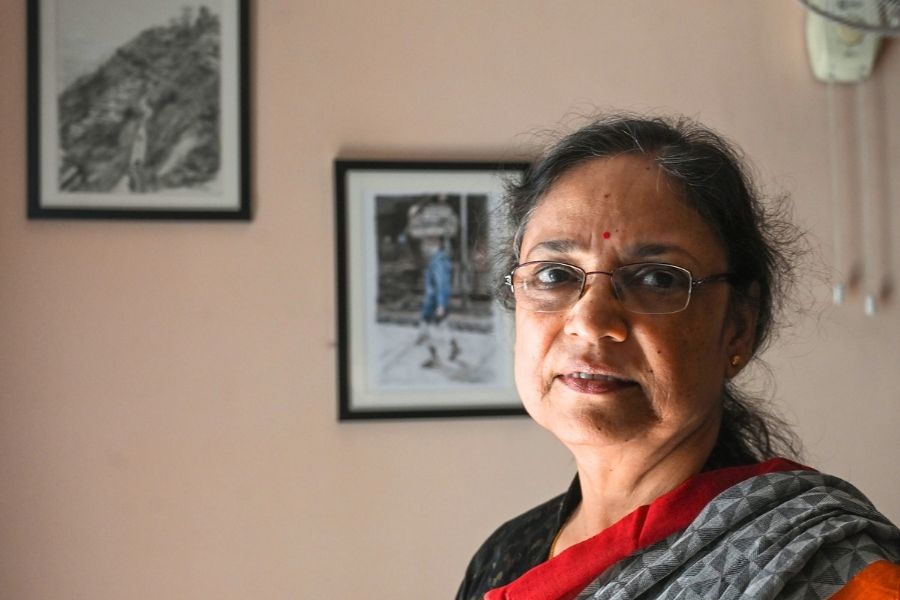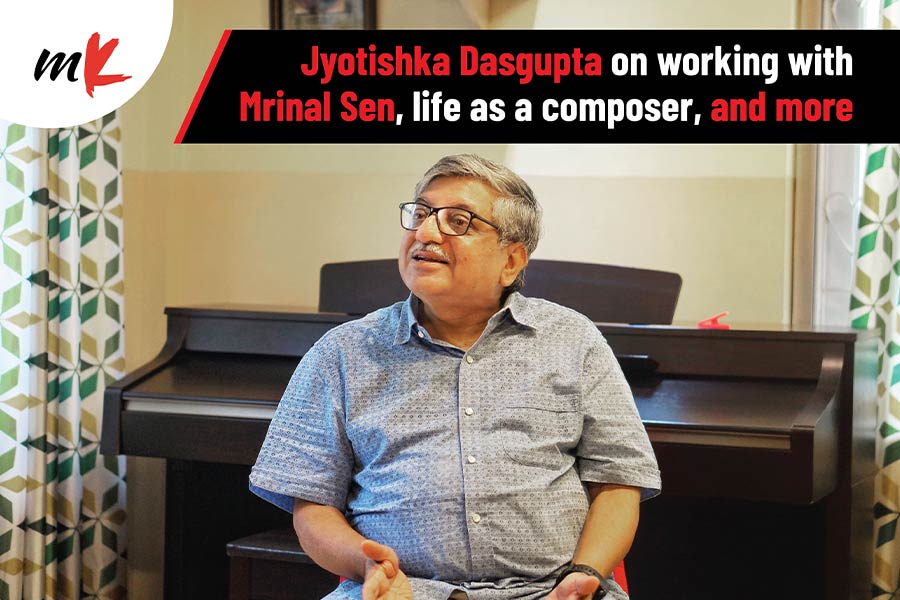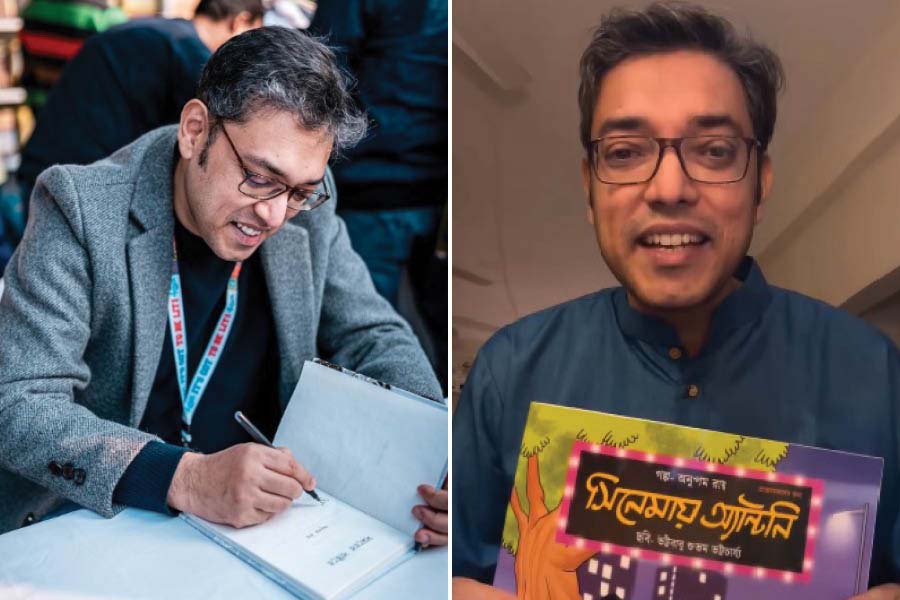Madhurita Roy’s journey as a singer reminds one of the iconic song by Lata Mangeshkar: Meri Awaaz Hi Pehchaan Hai, Gar Yaad Rahe.
The driving force behind son Anupam Roy, Madhurita, 62, introduced him to Rabindrasangeet and other genres of music from his childhood. While her son has received global recognition as a musician, Madhurita chose a different life for herself — far away from the spotlight.
Madhurita, whose debut and only album, Tomra Ja Bolo Tai Bolo (2001), has been brought to life by Anupam, showcases her command over the craft, and how music is an intrinsic part of her life.
The artiste’s taalim in music was organic. Hailing from Berhampore in Murshidabad, she grew up in a home where music was a way of life. “My father, Pranab Kumar Bandyopadhyay, was a registered lyricist of All India Radio. There was an ambience of music in my home,” said Madhurita.
‘M’ in Madhurita stands for music

For Madhurita, music is life, and singing just for herself is the key to her happiness Amit Datta
“I cannot live without music. When I was little, and if I had a sore throat and could not sing, it would make me cry,” said Madhurita, who still sings everyday, for herself.
Her grandmother, who was an untrained singer with impeccable music sense, would fill the kitchen not just with the aroma of spices, but also with Rabindrasangeet like Tomar Asheemey. Her mother, also an untrained singer, contributed to inculcating music in her life. Madhurita and her three sisters inherited music as a family heirloom.
Madhurita started singing when she was three-years old, and her first public performance was at the age of four. “I sang Ei Akashe Amar Mukti Aloy Aloy at an age when I could not even read, and I forgot a few lines in the middle. Someone told me the missing lyrics and I finished the song,” she reminisced as a foggy winter morning sun touched her face at her Kolkata residence.
Encouraged by her musical family, Madhurita also organised cultural programmes in her neighbourhood in Berhampore. “We would celebrate Rabindra Jayanti and Baishe Srabon in our house,” the singer looked back.
A student of Kasiswari Balika Vidyalaya in Berhampore, Madhurita was a regular performer at her school functions. “We performed Tasher Desh at the Rabindra Mela. We also performed a portion from Goopy Gyne Bagha Byne on the 25th anniversary of my school, where I sang for Goopy. In 1979, the year of International Year of Child, the Goopy-Bagha skit was performed by us in Kolkata, which bagged many prizes and accolades,” said Madhurita.
Second innings, Suchitra Mitra, and a music album
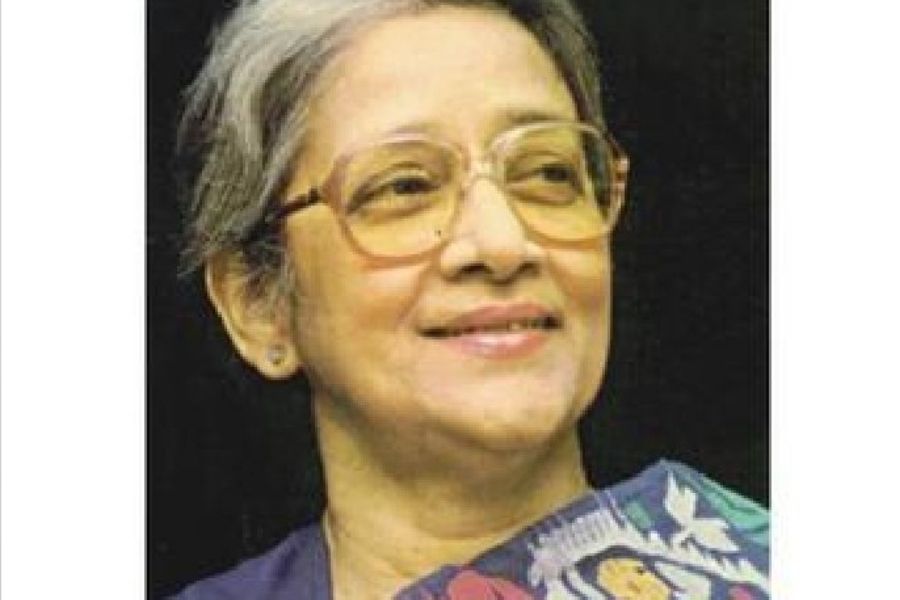
Rabindrasangeet exponent Suchitra Mitra, who gave formal training to Madhurita TT Archives
Madhurita’s second innings in music happened after she became a mother in 1982. She resumed her education and completed her graduation in political science from the Berhampore Girls’ College. Around the same time, an acquaintance, who was a student at the Rabitirtha in Kolkata, encouraged her to resume her music practice.
Rabitirtha, founded by legendary singer Suchitra Mitra, further honed Madhurita’s musical prowess. “Suchitra Mitra took our music class for two years at Rabitirtha. I gave my examinations there and even ranked!” shared Madhurita, gleaming about a milestone that shaped her journey.
The making of the cassette album ‘Tomra Ja Bolo Tai Bolo’
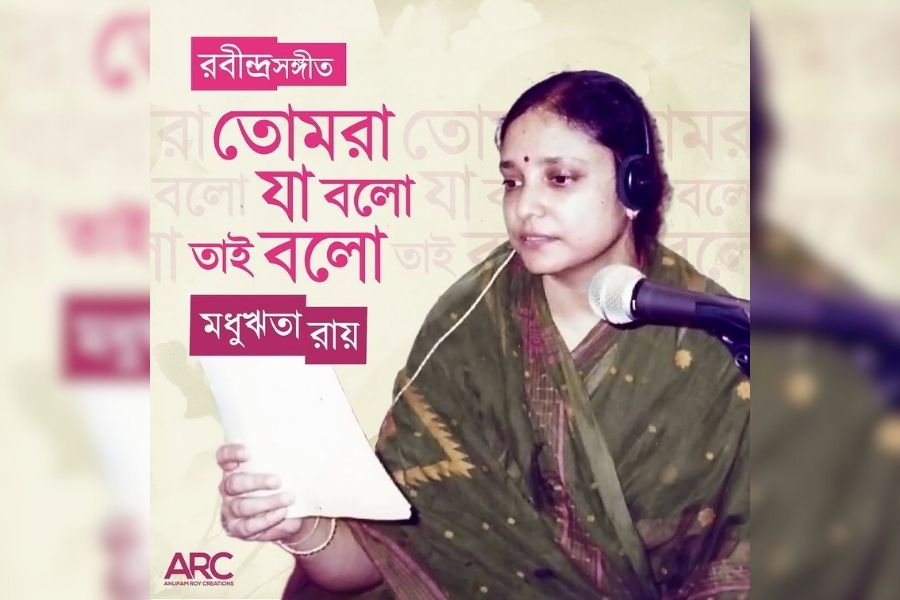
The album cover of Madhurita’s debut Rabindrasangeet album — ‘Tomra Ja Bolo Tai Bolo’
The artiste was trained by Sumitra Roy and Sumitra Chatterjee at Rabitirtha. Taking a look back at her student days at the academy, she shared, “Suchitradi would always ask us to read the songs first to get a preliminary understanding”.
Suchitra Mitra, who received her training from music exponents like Santidev Ghosh and Indira Devi Chaudhurani in Santiniketan, taught her students to focus on understanding the song before singing it, and it is something that Madhurita follows till date as a student of music.
The formal music training at Rabitirtha added a new chapter in Madhurita’s life, something that she has relived again at a gap of 30 years — through the digitisation of her cassette album — Tomra Ja Bolo Tai Bolo.
“Dulal Bhattacharya, who accompanied me on the tabla, suggested that I record a few songs on a cassette. He selected the songs and inspired me,” said Madhurita, attributing her milestone to her teacher.
A son’s ode to his guru — his mother
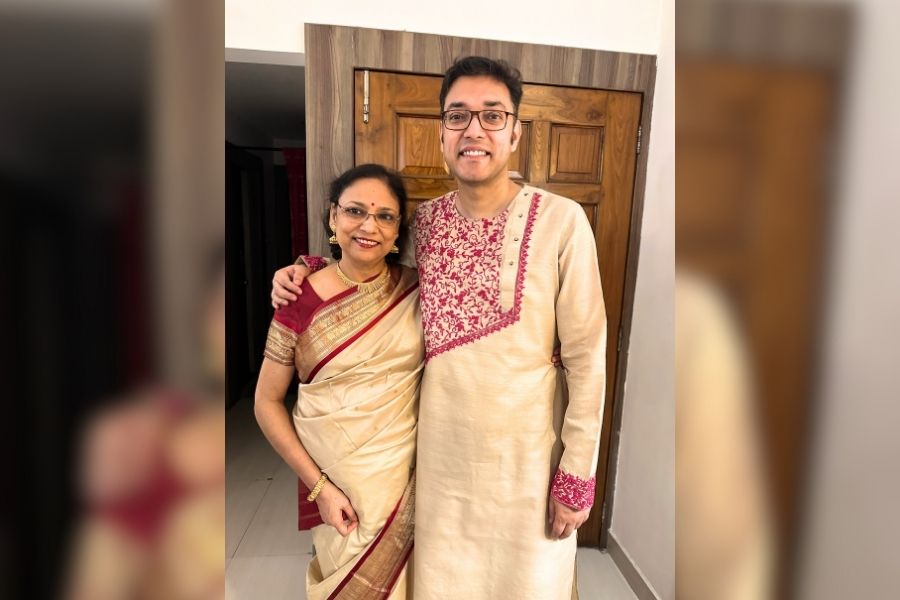
Madhurita with son Anupam Roy Anupam Roy
Music is an important part in Madhurita’s daily life. But, little did she know that a guru pranam was on its way, and it was from her son. Anupam, who had heard innumerable songs from his mother since his childhood, took on a personal project and converted the audio cassette into digital files. The 10 songs in the album can now be heard on her YouTube channel.
“One day, Anupam told me he has dug out the album and wants to do something with it. I was surprised,” she said, smiling shyly. Madhurita respected her son’s wish of digitising the songs, and Anupam paid his tribute by immortalising the songs that were lost in time.
Anupam loved Ujjwal Ek Jhank Payra when he was little. Today, he has several chartbusters in both Bengali and Hindi to his credit. Madhurita is one of the first listeners of her son’s compositions, and she loves the “offbeat” songs composed and sung by him — like Alote Alote Dhaka from the film Kontho and Amar Dukkhogulo Kachimer Moton from Drishtikone.
An avid listener of music, Madhurita likes tuning into the songs of Shreya Ghosal and Iman Chakraborty, and is updated on contemporary Bengali music.
A choice with no regrets
Not recording a second cassette was a deliberate choice. So was not taking up music as a profession. For Madhurita, music was a deeply personal passion. She has performed at various local functions, but never for the silver screen.
“Amar nijer kono tagid chilona, amar nijer jonnoi hoyni (I did not feel the urge, it is on me),” said Madhurita. And it did not paint a picture of a singer lost in oblivion, but rather of a singer so sure of her craft, that she did not feel that the limelight was necessary. Madhurita still does her riyaaz , if not everyday, but as often as possible. “My voice is not how it used to be,” she said, without a hint of lament, but with acceptance and surety of her command of the craft. She has a gaaner khata (book of songs) that has been her companion for many years, but she shares a deeper connection with Rabindranath Tagore’s collection of songs, Geetobitan.
‘Robe Rabi’, through the eyes of a silent worshipper
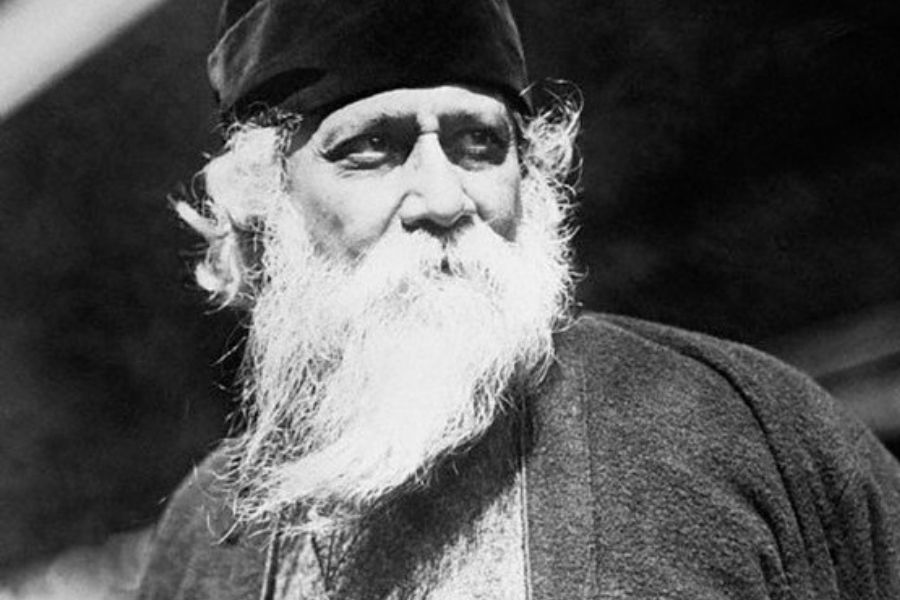
Tagore’s songs have shaped the musical journey of Madhurita Wikimedia Commons
Madhurita listens to Rabindrasangeet everyday. Tagore is an integral part of her life as an artiste. “Rabindranath is part and parcel of my life. From my childhood till date, I cannot imagine a day without Rabindranath. Rabindrasangeet is not just songs, but much more than that. It is divided into prem, puja and other types, but, if you notice, a song that is under pujo porjay is also somehow related to prem porjay,” reflected the artiste.
Madhurita’s favourite Rabindrasangeet include Tomar Amar Oi Birohero Antaraley, Ami Tomaro Songe Bendhechi Amar Praan, Gopono Kothati Robe Na Goponey, Sei Bhalo Sei Bhalo, and Tomra Ja Bolo Tai Bolo.
